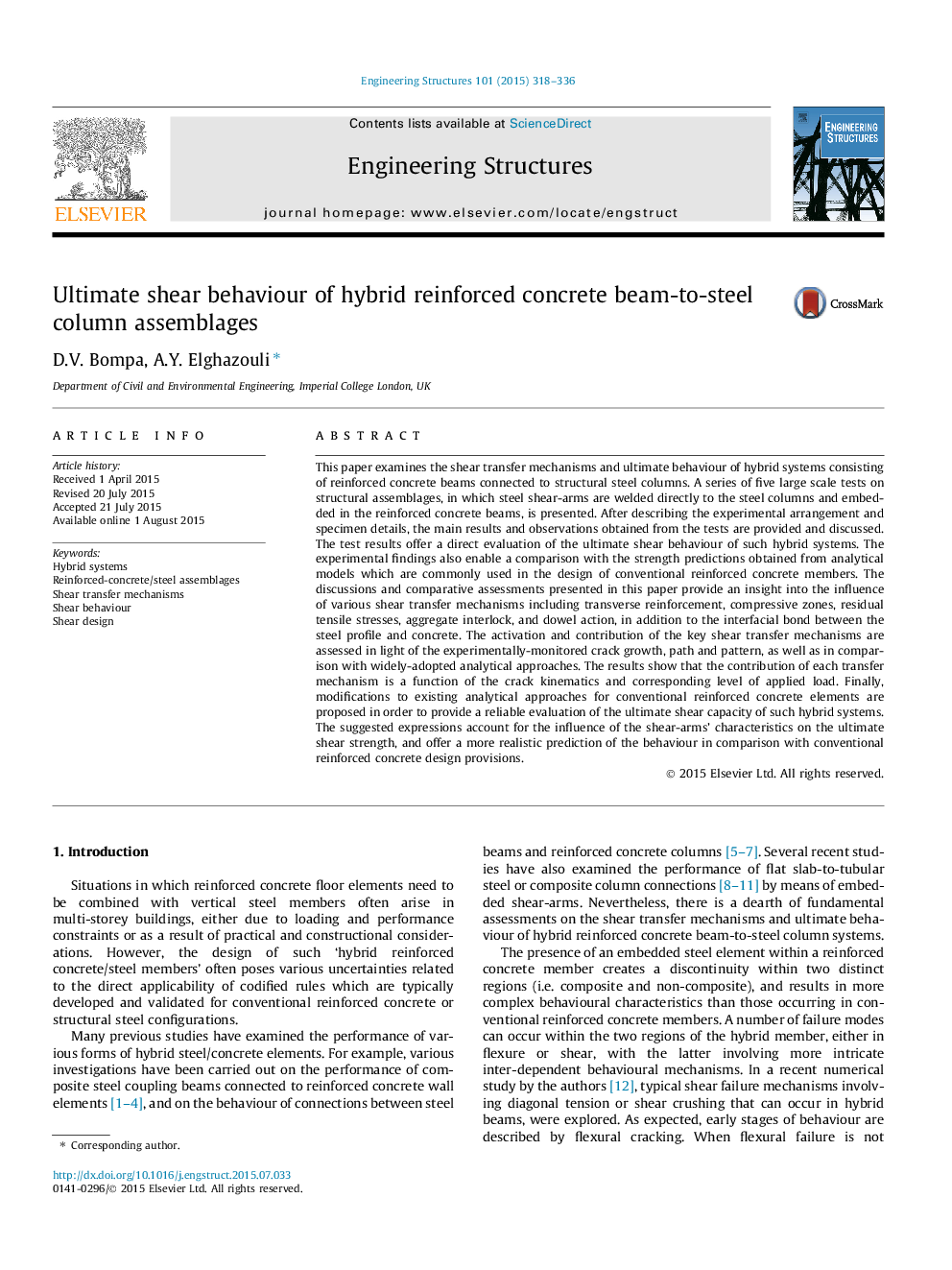| Article ID | Journal | Published Year | Pages | File Type |
|---|---|---|---|---|
| 266046 | Engineering Structures | 2015 | 19 Pages |
•Results from five large scale tests on hybrid RC beam-to-steel column assemblages.•Detailed measurements enable insight into contribution of shear transfer mechanisms.•Modified design procedure offers realistic estimates for ultimate shear strength.•Proposed procedure accounts for influence of shear-key characteristics on behaviour.
This paper examines the shear transfer mechanisms and ultimate behaviour of hybrid systems consisting of reinforced concrete beams connected to structural steel columns. A series of five large scale tests on structural assemblages, in which steel shear-arms are welded directly to the steel columns and embedded in the reinforced concrete beams, is presented. After describing the experimental arrangement and specimen details, the main results and observations obtained from the tests are provided and discussed. The test results offer a direct evaluation of the ultimate shear behaviour of such hybrid systems. The experimental findings also enable a comparison with the strength predictions obtained from analytical models which are commonly used in the design of conventional reinforced concrete members. The discussions and comparative assessments presented in this paper provide an insight into the influence of various shear transfer mechanisms including transverse reinforcement, compressive zones, residual tensile stresses, aggregate interlock, and dowel action, in addition to the interfacial bond between the steel profile and concrete. The activation and contribution of the key shear transfer mechanisms are assessed in light of the experimentally-monitored crack growth, path and pattern, as well as in comparison with widely-adopted analytical approaches. The results show that the contribution of each transfer mechanism is a function of the crack kinematics and corresponding level of applied load. Finally, modifications to existing analytical approaches for conventional reinforced concrete elements are proposed in order to provide a reliable evaluation of the ultimate shear capacity of such hybrid systems. The suggested expressions account for the influence of the shear-arms’ characteristics on the ultimate shear strength, and offer a more realistic prediction of the behaviour in comparison with conventional reinforced concrete design provisions.
